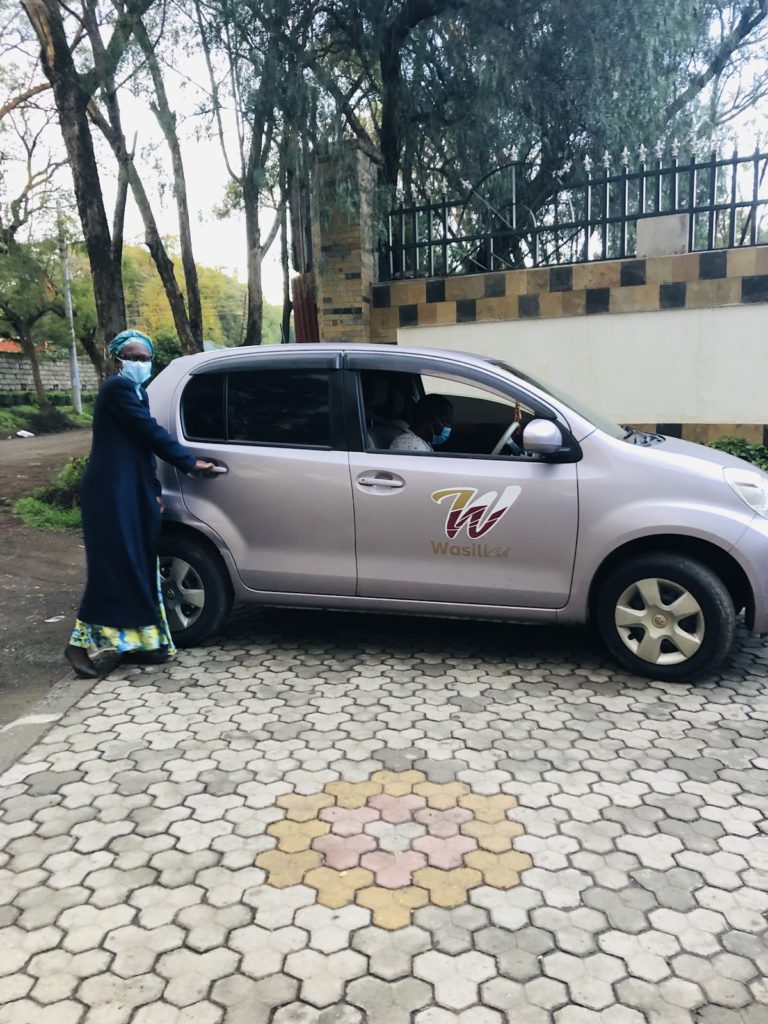ride-hailing drivers
What does it feel like to be a young ride-hailing driver in Kenya, beyond central Nairobi?
Ride-hailing is a common kind of gig work that combines two elements: working and renting (some rent vehicles and have to remit money on a daily or weekly to the owner, others own vehicles and drive them themselves).
Many studies have focused exclusively on drivers in Nairobi; thus this study sought to understand the experience of drivers outside of the biggest cities, working in peri-urban areas and smaller agricultural towns, and using local ride-hailing platforms instead of international platforms.
interviewed 19 motor vehicle drivers from across the broad Nairobi Metropolitan area (5), and in Nakuru (10) and Kitale (4) counties in the Rift Valley. Most participants had at least a secondary-level education; eight had a tertiary advancement. Some (one-third) joined ride-hailing after becoming unemployed due to layoffs or underemployment. Others joined from other transport sectors (tuktuk or matatu drivers). Most in this category drive low-fuel consumption vehicles.
“It makes sense when you own the car. But when you don’t own the car, you have to share your earnings with the owner and yourself. And you know, the owner takes a very huge chunk ….You know, your relationship with the owner is basically based on money. So long as they keep seeing money, we are settled down. You don’t want them to start calling you.”—Mburu, 28, Driver (Nakuru)
Platform experiences of ride-hailing
The job is fulfilling: “hutoki bure” (at least there is some money)
For most of the drivers interviewed, working in this sector gives them a chance to earn, for which they are grateful. Some drivers either rent a vehicle from an owner and list their services on a platform. Others drive their own vehicles, which they either own outright or have bought with aloan. Some car owners employ drivers to work for an agreed daily or monthly fee; others register their vehicles on platforms and ask platforms to recruit drivers on their behalf. Car ownership leads to differences in earnings and experience between drivers.
Drivers may engage in unorthodox means to stay competitive.
As most drivers describe themselves as self-employed, flexibility means sometimes ditching the platforms when there are low returns to do something else and return during peak hours. Others work seven days a week, using Sunday to try to meet their weekly targets. The majority of drivers have daily targets that they use to move their business. Drivers may engage in unorthodox means to stay competitive in the face of competition. Some drivers take requests offline and give discounts to customers as a way to form relationships.
Drivers believe there’s a need to reimagine partnership.
Despite the ability to earn, tensions emerge on how the platforms engage with drivers. Platforms promote their promise of joining and earning, but in the face of low demand, drivers now want to redefine the partnership. “… if I take my cab there I’m not an employee, I am a partner. That’s why my car is mine and the app is yours.” —Tom, 30, Driver (Nakuru)
Drivers find digital platforms attractive because they are more secure and have higher access to clients. Some drivers also use platforms for price checks, especially for offline clients, when traveling to a new destination. As long as there is work, drivers will continue to use digital platforms; failure to get riders will result in drivers leaving the platforms.
Community networks enable drivers to share information, but there is no clear path to collective action.
Community networks are stronger in Nakuru and Kitale, where drivers use them to circulate information, such as techniques for handling bad customers, collective action to effect change in the platforms, social ride-sharing, and social welfare. This is usually through online groups, especially WhatsApp.
Community support also extends to social welfare, where drivers contribute a certain amount to the families that have lost immediate family members. Drivers also request help when clients refuse to make payments or if they sense danger.
The future is not always in the driver’s eyes.
Because there is no clear path of upward mobility, growth in this sector may take several streams. For some, purchasing their first or additional assets is the ultimate growth; for others, ride-hailing platforms are launching pads to other sectors. Others, especially in rural towns, can be elevated to levels such as supervisors of other drivers (this is for owners with multiple cars) or find other ways to earn an income, for instance, regular paying clients.
Drivers face compounding vulnerabilities.
Echoing the logistics sector and other ride-hailing reports, drivers face many on-the-ground challenges: long working hours with few or no breaks, lack of safety nets, legal and governmental challenges, and insecurity. Some of these challenges were exacerbated during the COVID-19 pandemic, where drivers’ lives were at risk. Interviewees also brought up the issue of not getting any support from platforms to dialogue with county governments about license fees and operation within the city, a situation which presents vulnerability and shifts most of the responsibility for compliance from the platform to individual drivers.
Female drivers face specific societal views and challenges.
Men dominate the industry. Some state that there are few women drivers because of the complexity of acquiring a Public Service Vehicle license. Others speak about safety concerns. Even if women are willing to join, they cannot effectively compete with men, as they will not work during odd hours due to safety concerns and what some researchers call women’s triple burden: reproduction, production, and community.


Conclusion
The experience of this sector echoes the logistics sector, where drivers depend on platforms to get access to clients. The difference between the two sectors is that society views vehicular driving as more acceptable than motorcycle. Although the work may not be fulfilling in terms of earnings or flexibility, many drivers use this as a platform for future entrepreneurship goals.
Drivers’ experiences differ according to car ownership; those without vehicles struggle to find markets and earn sustainable income. They speak of a deteriorated experience, especially after the pandemic where income dipped and they still had to pay the car owners from whom they were renting. The growth of digital platforms shows the potential for ride-hailing to an investment opportunity. Unfortunately, due to the high asset acquisition, the investors may not be the drivers. None of the drivers interviewed had more than one vehicle. As the sector evolves, there remains much to be done to ensure sustainable livelihoods for its drivers.
Finally, these interviews portray a strong community network of drivers in peri-urban areas that serves as an alternate marketplace to connect drivers to clients. In smaller towns, people know each other and can form communities. The further spread of digal ride-hailing into rural areas may be facilitated by a combination of coverage by a) formal ride-hailing networks and b) these informal networked communities of drivers coordinating via WhatsApp and other messaging platforms, developments worthy of further research.
Explore the report’s results on other sectors
The arts and creative industries: Digital channels as a source of inspiration, distribution, and a platform to educate audiences on the value of art.
Asset renting: People can earn a living by renting out assets they own (like property, tractors, or specialized equipment) or by renting them then re-renting them out in smaller fractions.
Delivery and logistics: Fast-paced work, driven by algorithms. Structured weekly earnings, support in bookkeeping, budgeting, and saving.
E-commerce and social commerce: Experiences with platform sales via formal marketplaces, social commerce, paid and free online advertising.
Farming: Formal multi-sided marketplaces built to connect farmers to markets and “social agriculture,” the practice of using social media to sell agricultural commodities and get social support in communities.
Freelancing and microwork: To connect with clients all over the world for everything from data processing to graphic design and writing, freelancers must build a personal brand while microworkers mostly remain anonymous.
Trades and services: Domestic and care work, trades for custom-made products, and a myriad of other services, delivered on demand and matched by marketplaces and social media.
Cross-cutting themes: Reflections on cross-cutting themes around rurality, gender, inclusion for people with disabilities, and fractional work.
see more studies

© 2024 All Rights Reserved.


